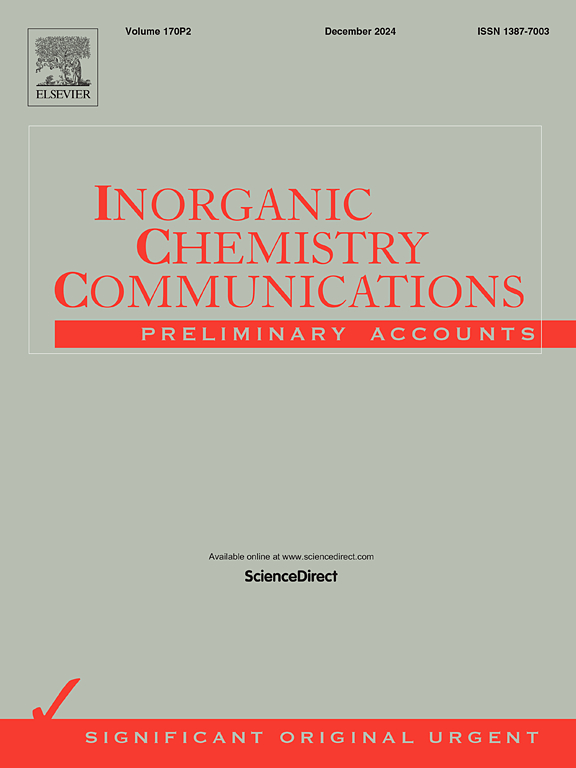First-principles study of non-metallic doping and noble metal loading on ZnIn2S4 semiconductor photocatalyst
IF 4.4
3区 化学
Q1 CHEMISTRY, INORGANIC & NUCLEAR
引用次数: 0
Abstract
Zinc Indium Sulfide (ZnIn2S4, ZIS) is recognized as a promising semiconductor photocatalyst for widely applications such as water splitting for hydrogen production, due to its non-toxicity, proper band gap and strong visible light absorption. However, it still faces challenges including moderate intrinsic activity and limited active site number. Herein, this work studied the photocatalytic performance of hydrogen evolution reaction (HER) in the ZIS with non-metallic elements doping and modified with Pd atomic cocatalysts through first-principles calculation. The results show that the catalytic activity of the ZIS(0 0 1) basal surface is improved when doped with B, C, F, Si, P, Cl, Se, Br, Te, or I, among which Si doping shows the most significant improvement in intrinsic catalytic activity. Further enhancement is observed by loading Pd atom onto the Si-doped ZIS(0 0 1) surface to create the Pd@Si-ZIS(0 0 1) structure, leading to increased active surface sites and intrinsic catalytic activity. Comparison with S sites on the Si-ZIS(0 0 1) basal plane shows that the hydrogen adsorption free energies of S sites on the Pd@Si-ZIS(0 0 1) basal plane approach 0 eV (0.072 eV and 0.074 eV), resulting in an enhanced catalytic performance. Moreover, the Pd sites on the Pd@Si-ZIS(0 0 1) basal plane are activated, and exhibit a superior catalytic activity beyond single Pd loading.

求助全文
约1分钟内获得全文
求助全文
来源期刊

Inorganic Chemistry Communications
化学-无机化学与核化学
CiteScore
5.50
自引率
7.90%
发文量
1013
审稿时长
53 days
期刊介绍:
Launched in January 1998, Inorganic Chemistry Communications is an international journal dedicated to the rapid publication of short communications in the major areas of inorganic, organometallic and supramolecular chemistry. Topics include synthetic and reaction chemistry, kinetics and mechanisms of reactions, bioinorganic chemistry, photochemistry and the use of metal and organometallic compounds in stoichiometric and catalytic synthesis or organic compounds.
 求助内容:
求助内容: 应助结果提醒方式:
应助结果提醒方式:


